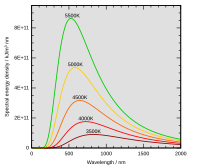
Photo from wikipedia
Abstract Tungsten, the plasma facing material (PFM) for the divertor in ITER, must sustain severe, distinct loading conditions. This broad array of exposure conditions necessitates comprehensive experiments that cover most… Click to show full abstract
Abstract Tungsten, the plasma facing material (PFM) for the divertor in ITER, must sustain severe, distinct loading conditions. This broad array of exposure conditions necessitates comprehensive experiments that cover most of the expected loading parameters to predict qualitative statements about the performance and as a consequence thereof the intended operation time. However, comprehensive experiments are inherently difficult to realize due to the fact that there is no device that is capable of simulating all loading conditions simultaneously. Nevertheless, the linear plasma device PSI-2 enables experiments combining thermal and particle exposure at the same time. In this work, sequential and simultaneous loads on pure tungsten at different base temperatures were investigated to study not only the performance of the material, but also the influence of the experimental parameters. The detailed analysis and comparison of the obtained results showed different kinds of damage depending on the loading sequence, power density, microstructure of the samples, and base temperature. Finally, samples with transversal grain orientation (T) showed the weakest damage resistance and the increase of the base temperature could not compensate the detrimental impact of deuterium.
Journal Title: Nuclear materials and energy
Year Published: 2017
Link to full text (if available)
Share on Social Media: Sign Up to like & get
recommendations!